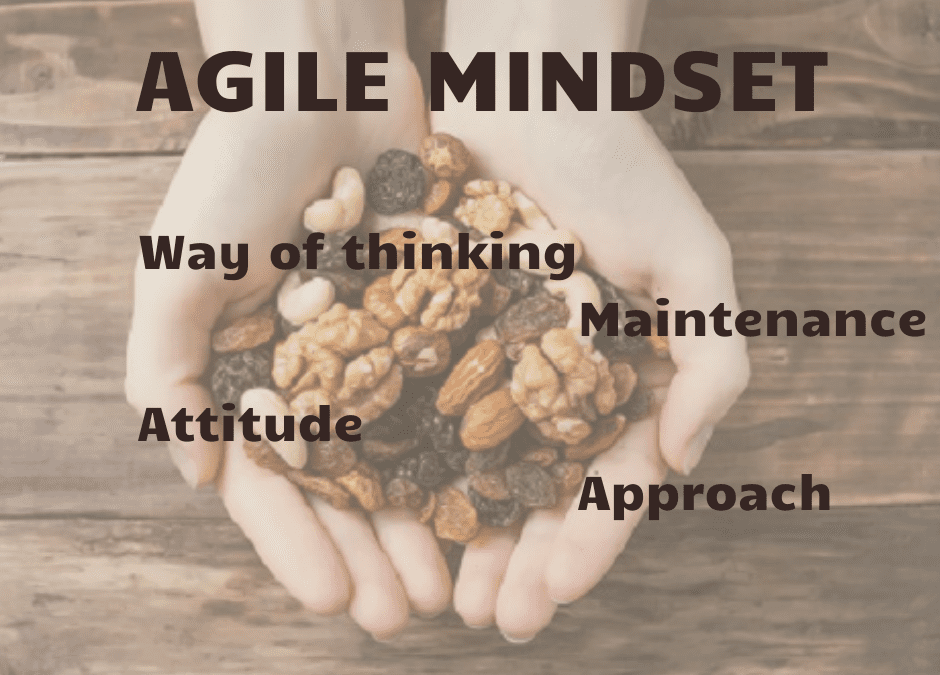In the first two articles of the series “Agility in the Nutshell”, I presented Agile values and principles. This article is about an Agile mindset.
By mindset, we mean ways of thinking, attitudes and approaches to problems. Agile mindset means changing the classical patterns of thinking about cooperation and leadership. It is explicitly not about introducing Agile methods while maintaining the old organisational structure.
Agile mindset encompasses the life of agile principles as an everyday routine and self-image rather than as “prescribed behaviour”. This usually does not happen overnight but requires managers to reflect and question their behaviour again and again. The agile mindset needs time to grow.
Agile mindset means being flexible and adapting to the current conditions as quickly as possible. It also means to be willing to learn and to shape one’s actions in small iterative loops and to draw conclusions from the respective experiences frequently.
Having an agile mindset means focusing on meeting the needs of the customer. It is about building trust in the team and strengthening the ability to cooperate within the group. For managers, it is essential to fill their role in such a way that they create a framework that allows the team to work well.
Iterative processes ensure that we can react quickly to changes. In this context, having an agile mindset means seeing change as something completely normal, and not resisting it, but seeing it as an opportunity to learn, as an incentive for further development. Working with flashbacks to reflect on the result, process and one’s behaviour allows you to fail quickly “fail fast” and at the same time to learn a lot and to continuously develop yourself, the team, the way of working and the relationships within the group.
Agile working puts producing a result before lengthy planning. We experience this topic again and again as a big hurdle because especially the subject of planning is mostly classically hierarchical. At the organisational level, it is usually a far cry from classic planning and is usually a rolling, short-term planning process.
If you want to deal with agility, we recommend as a first step to shedding light on what it takes to reflect on your ability to cooperate and to acquire skills to work with others. We consider this to be the first and decisive step towards being able to work successfully in an agile context in the future. Coaching and training are proven methods to make the first step towards an agile mindset.


Recent Comments